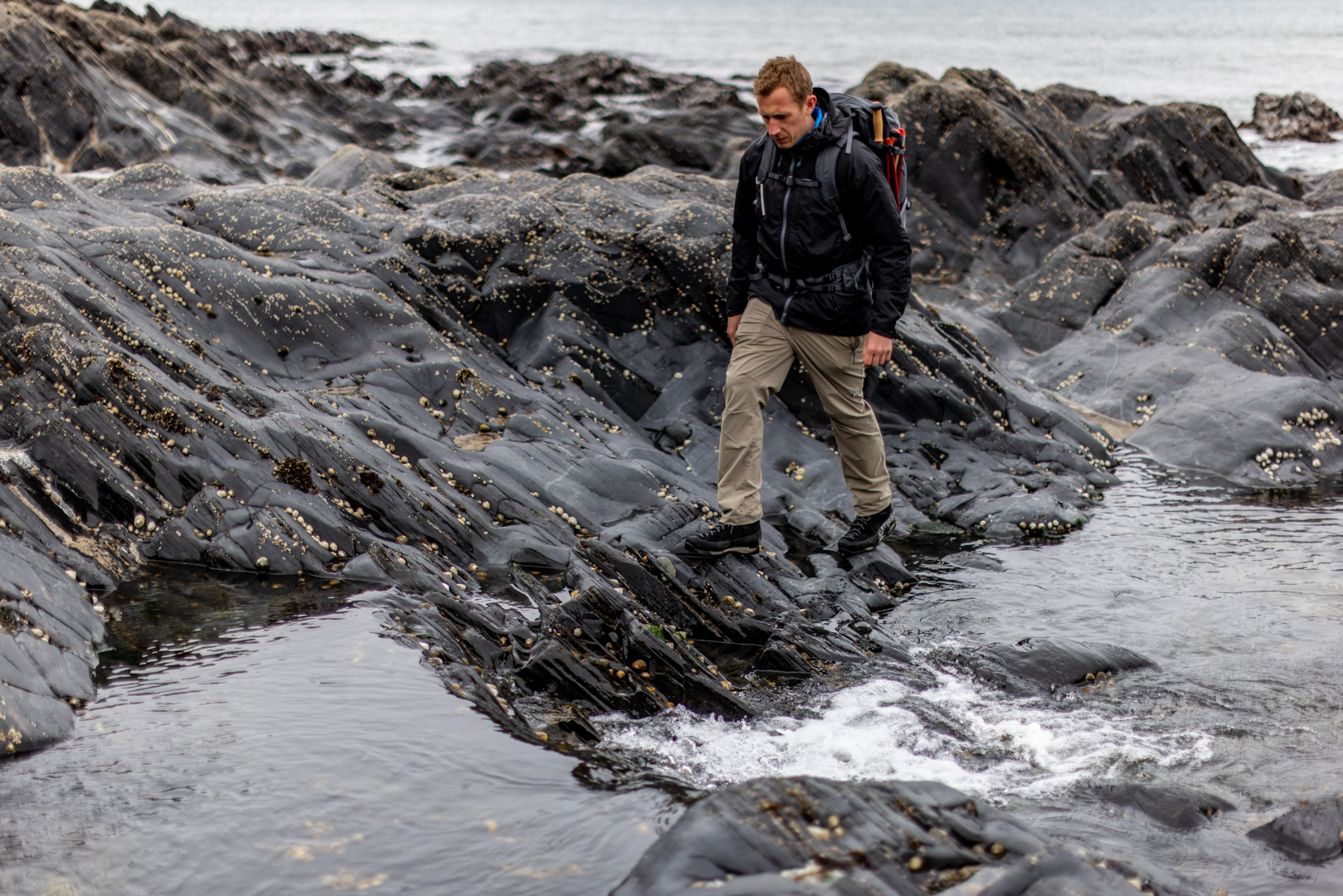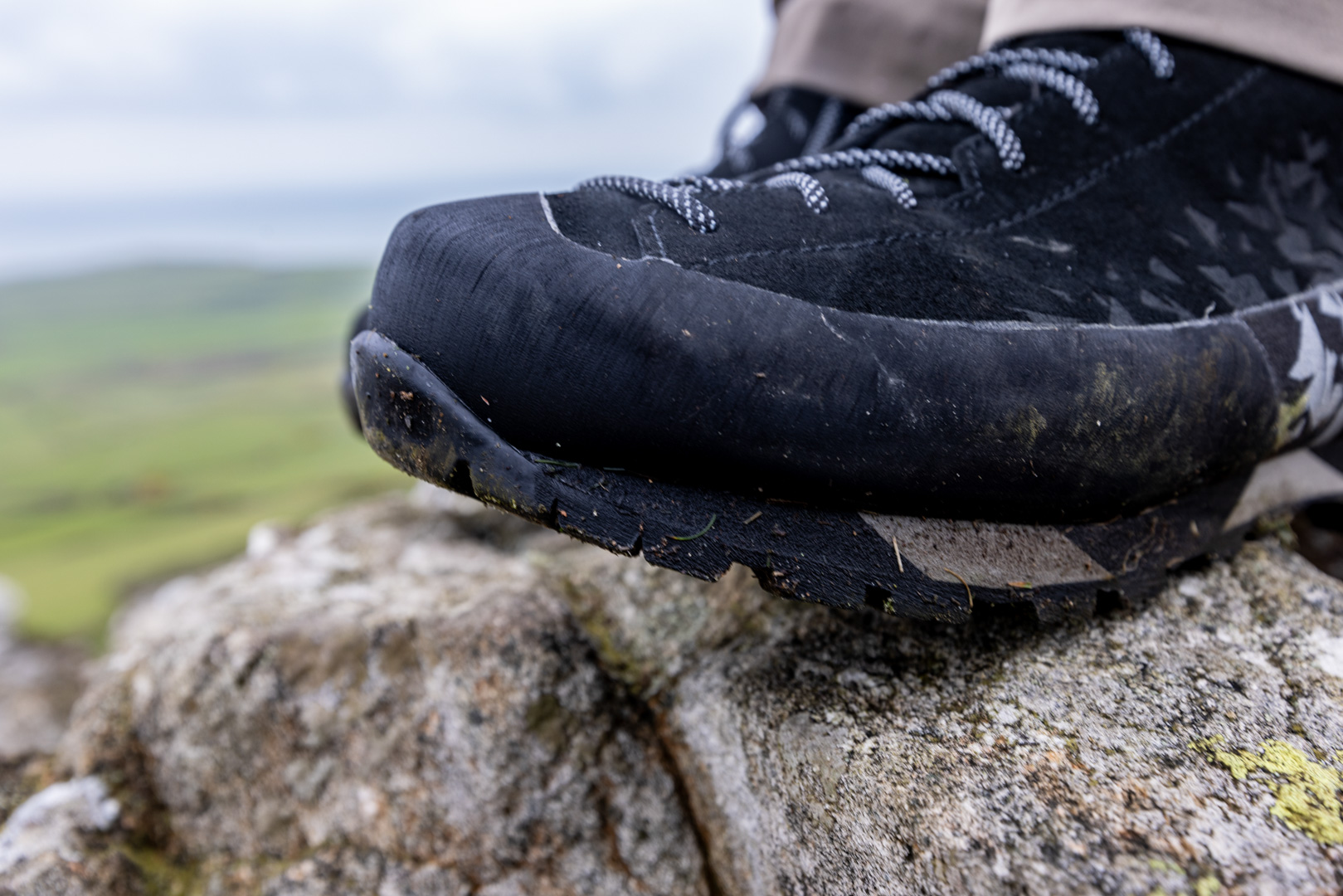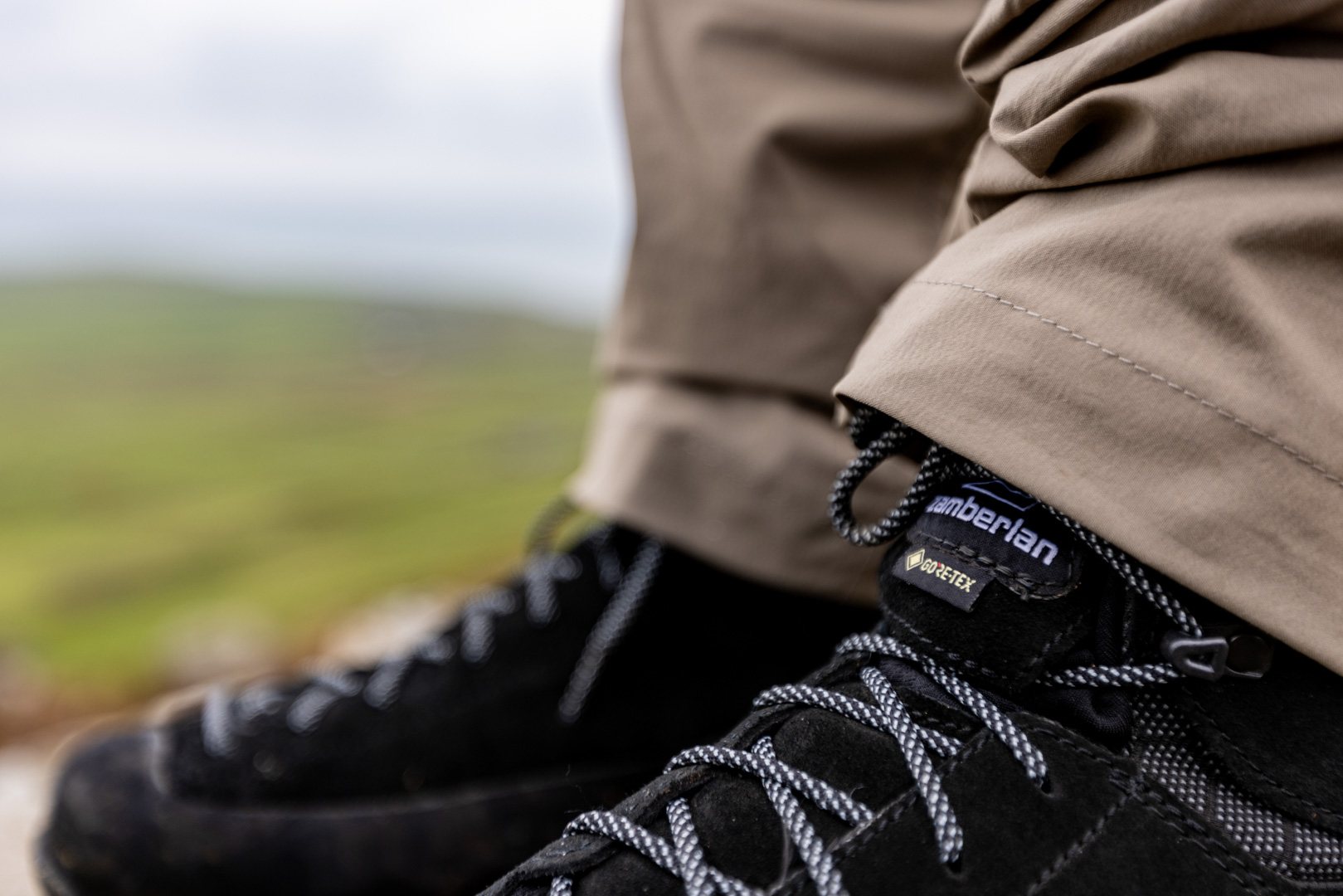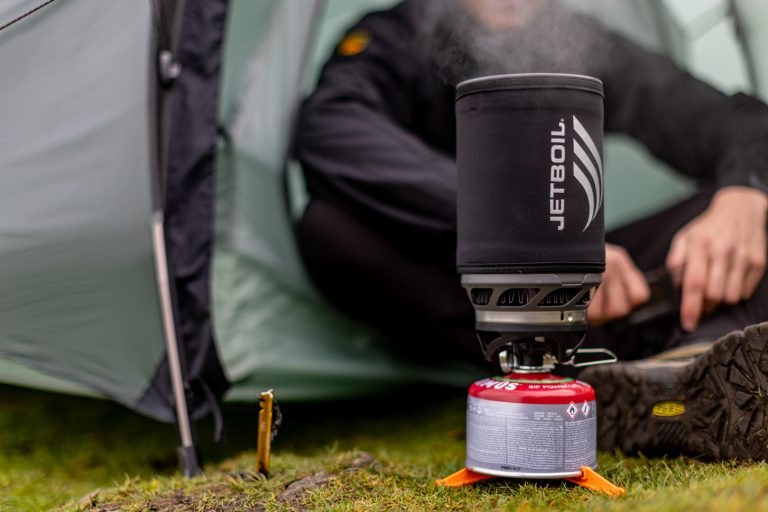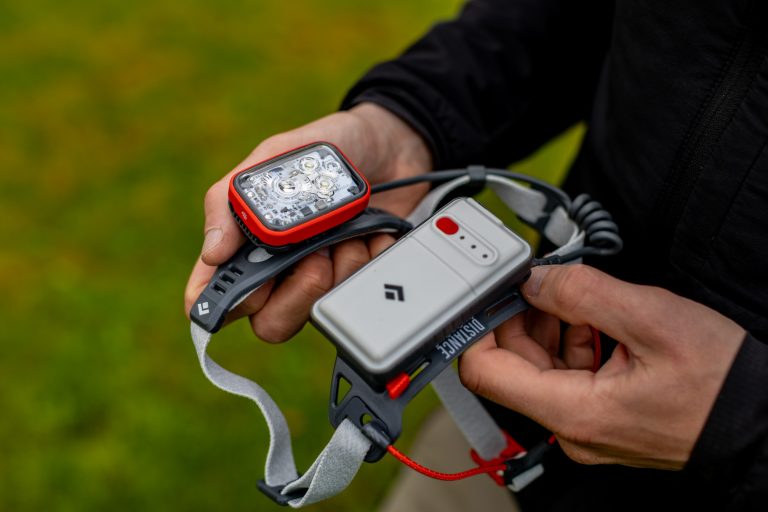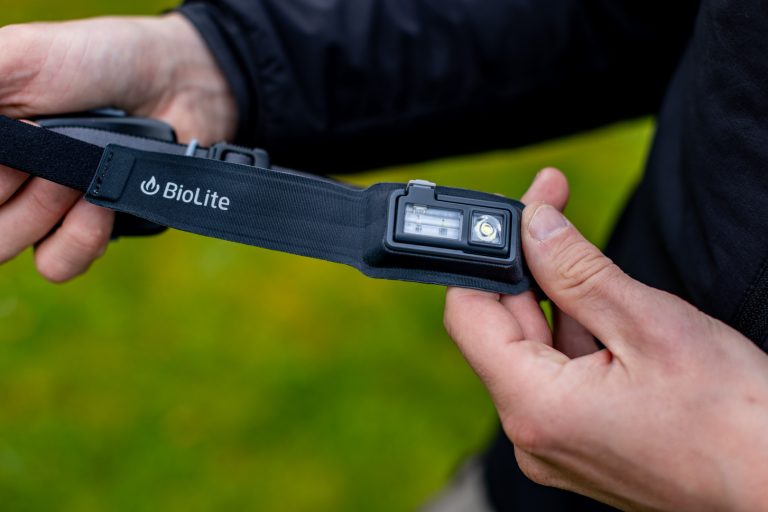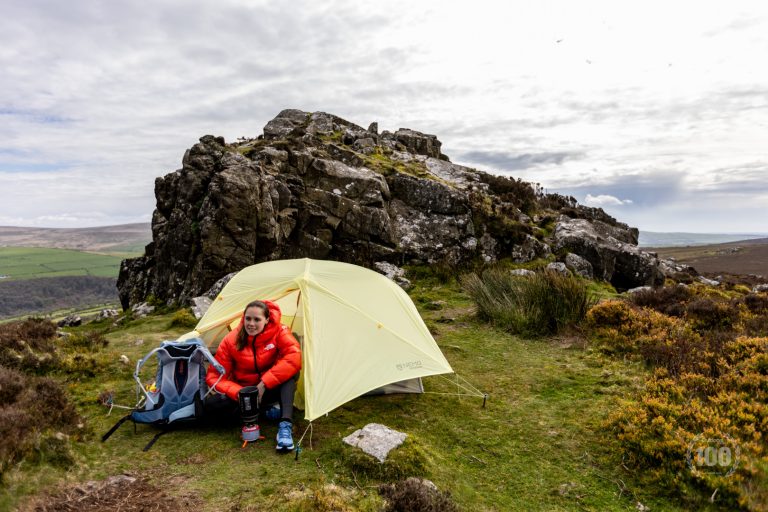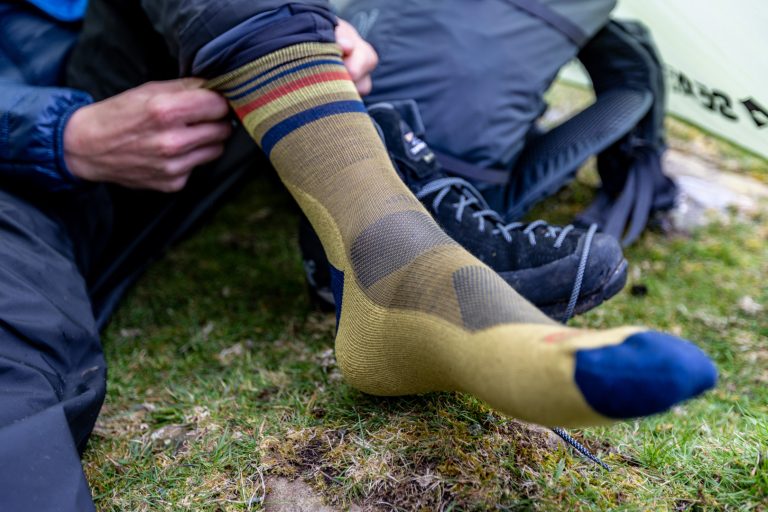I was impressed by this shoe from the moment I pulled it on. It feels well made, precise, reliable and made for the mountains.
The best way I’d describe this is it’s like an approach shoe blended with a hiking boot. That’s because it has a fairly narrow fit, lacing that extends right down to the toes and then the same kind of mid cut ankle you’d find on most three-season hiking boots.
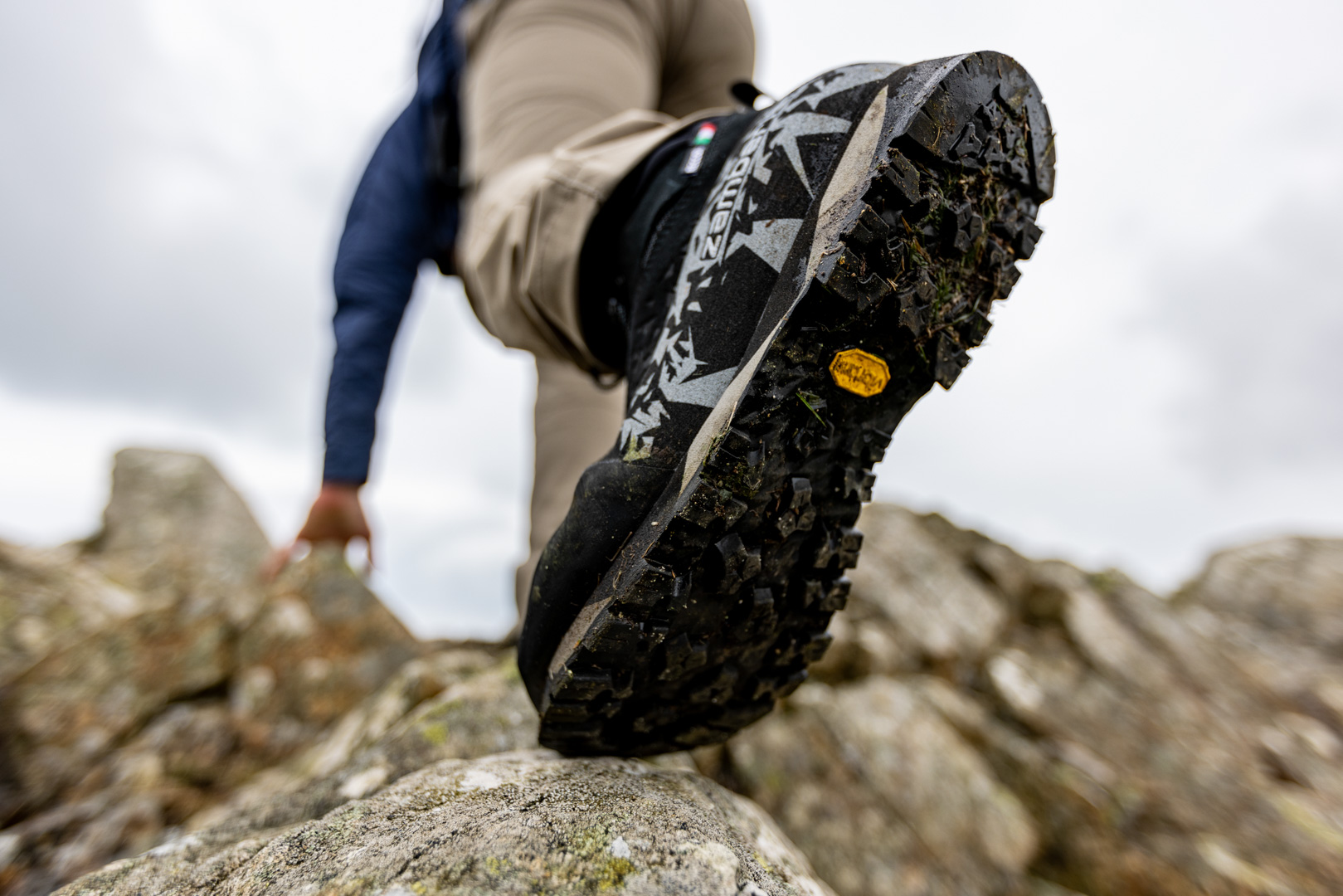
Zamberlan say it’s designed for hiking, approach routes and via ferrata. I’d say that’s accurate. From my experience using the Salathé Trek, I’ve found it well-suited to steep hikes over rocky terrain. Using it in north Pembrokeshire, it felt right at home on the spiky porphyritic igneous rocks encountered on my climb up Carningli. I can see it being handy for parts of Snowdonia or the Scottish Highlands and it would definitely be right at home in the Alps.
Fit
I tried it in a UK 10, which is my usual size. The fit is very close and narrow at the toe – that’s to be expected from a pair of boots made for hikes that involve rocky ascents. Going half a size up would give a more relaxed fit, but if you’re after a boot with a bit more space then you’d probably be better off looking into a different model – something like the Aku Trekker Lite III or perhaps the Zamberlan Anabasis.
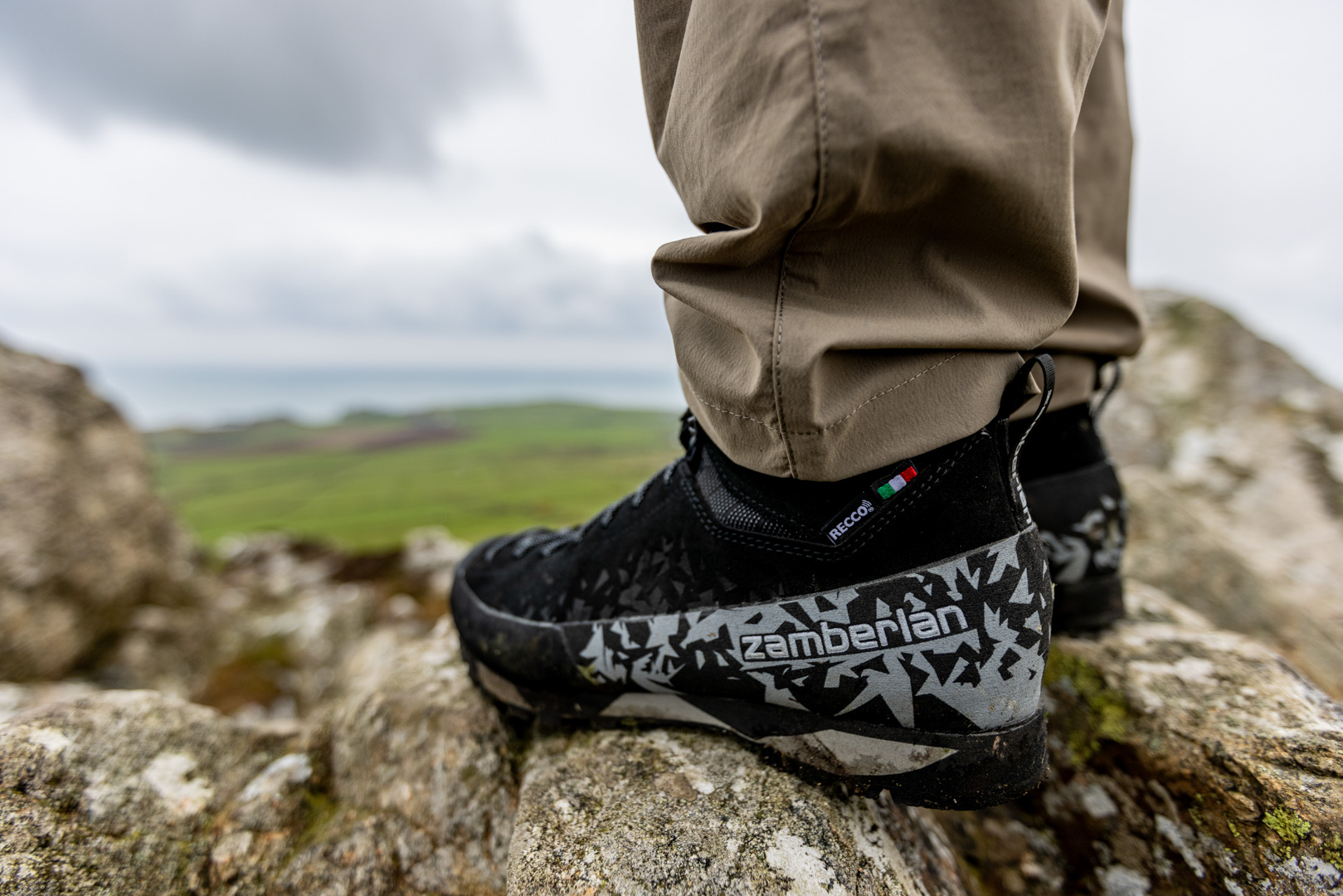
Although it’s designed for trekking, I’d say it’s quite a technical fit and it could feel a little bit tiring to wear over long distances, particularly when your feet start to swell and splay.
Materials and Construction
The upper is made from a thick suede leather with small panels around the ankle made from a ballistic nylon. There’s a big PU rand that goes right around the base of the upper adding a great deal of protection to the materials and to your feet.


